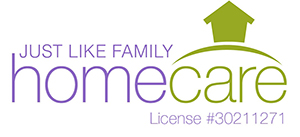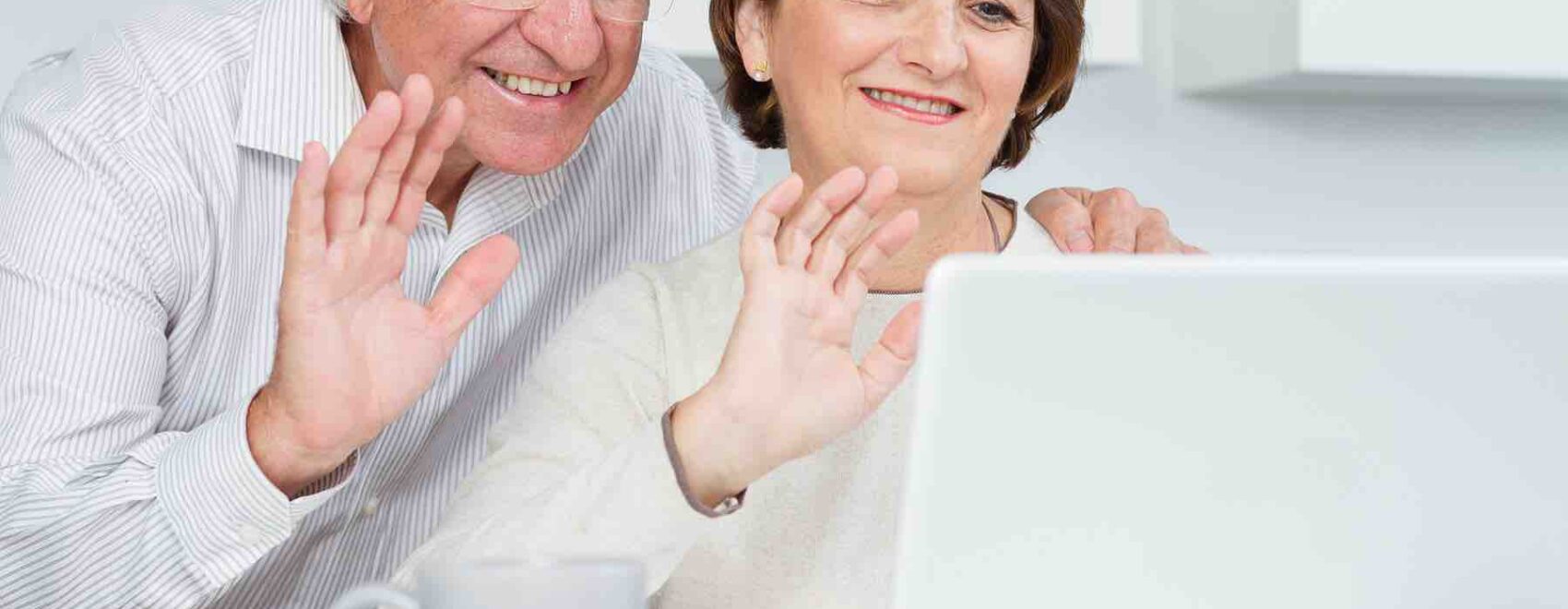Seniors and those recovering from surgery/injury can often feel isolated and/or afraid.
Caregivers, whether family or professional, can participate in their care and provide personal interaction, but often are only in attendance as needed. Fortunately, we have come a long, long way in how technology can help create needed connections to the “outside world.” Most of us cannot imagine a world without computers, or at least tablets and smartphones. But, many seniors still find these to be intimidating, having grown up in a time where telephones had wires and dials! The good news is that technology has made the new tools incredibly simple to use.
We at Just Like Family, encourage our clients, families, and friends to take advantage of the technological connections that are possible. Minimally, today’s cell phones can provide access, inexpensively, to basic phone calls, email and texting to family and friends, even internationally. Helping seniors, especially, understand the service they have, and how much access it can provide is critical.
While the phone can handle much more than basic calls and texting, access to a tablet and/or a computer makes access to these other tools much more enjoyable, if only for the size of the screen.
Phones & Tablets
We encourage seniors and patients to obtain a tablet/computer and learn how to participate in the following:
FaceTime
Having a conversation where you can actually see the other party is amazing. Not only can the senior see how the grandkids have grown, but the other party can check on the condition of their loved one and even their surroundings. Simple explanations of how FaceTime works are offered via ‘YouTube’ and other ‘how to’ sites. Other programs, such as Skype, offer similar service, but FaceTime seems to be the most popular and easiest to use.
Music
With a little help, seniors can set up their tablet (or phone) to play their favorite music, perhaps re-living special memories connected to certain songs. Most of us find that music lifts our spirits, if even just for short periods of time.
Brain activity
Tablets or computers are especially good for activities that keep the brain engaged, as a larger screen makes these more enjoyable. We encourage seniors to use technology for:
Reading
The ability to adjust the font, colors, etc. is very helpful to those whose vision is not as sharp. Online e-books can be found for free, or at a low cost. Those who struggle with memory issues find that highlighting certain passages improves memory, and appreciate the ability to ‘search’ for a person or action that they don’t remember. In addition to e-books, newspaper subscriptions are available at a significantly lower cost than print versions and can help the reader stay current with local events.
Mind/brain exercise
Apps, many for free, are available for many games or activities that help keep the brain sharp. Examples are Sudoku, Scrabble, and crossword puzzles. A simple search for “brain games,” however, identifies many more.
Technology Supporting Seniors Living at Home
Beyond the basic computer/table/phone ideas, new technologies provide other services that specifically help senior and the homebound. Three specific components we recommend be considered:
Emergency Response System
We tend to think of this as the “I’ve fallen and I can’t get up” system, but much more is available. A button you can push to summon help is still there, but the systems can also track whether the client has been still for too long, or has actually fallen. Seniors report that the “button” makes them feel much more secure about continuing to live at home, as well as feel connected to the outside world. In the worst situation, this technology can literally be a life-saver.
Medication Management (reminding/dispensing)
You don’t have to be a senior to have trouble remembering to take your medication, but many of our clients report this as an issue. Simple options, such as a weekly box that is ‘loaded’ with medications for each day of the week, and even for A.M. and P.M., are widely available. Many pharmacies, and companies, now package prescriptions for their clients by the day, or multiple times a day. Technology is also bringing us systems that remind us what to take when, and how much. These systems can include alarms and reminders (such as take at bedtime.) Use of these systems is encouraged, and we look forward to even more options in the future.
SmartHome technology
The ability to see what is going on, inside and outside of the home, as well as to control one’s surroundings is the latest technological advancement. The ability to see who is at the front door, and even to talk to that person, is a technology our clients might find useful. Many report that they feel much safer, and therefore more comfortable being alone, with this simple device. Other technologies to consider include those that allow the resident to address comfort issues without moving, including applications/devices that allow the resident to use their phone to adjust the temperature, turn the lights off and on, and even lock/unlock doors.
Technology and Home Care
Technology will never replace personal care, but it can help reduce the amount of care needed and increase self-sufficiency. Technology will never replace the joy of an in-person visit with a caretaker, family member or friend. But, the ability to connect via technology can overcome long distance, and well as time challenges. We all can find technology a challenge, but the joy and connection it brings make the effort worthwhile.

